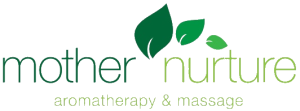I’ve been known to say frequently “aromatherapy is more than just nice smells”. We see the word ‘aromatherapy’ being used a lot but what is it really? Aromatherapy implies the therapeutic use of aroma, i.e. smells. So it could relate to many things. The market is awash with ‘aromatherapy’ products. An aroma or smell can come from many different sources. It can be a synthetic, manmade fragrance or can come from a natural plant based source, such as essential oils. Many products out there use synthetic fragrances to perfume their products. However if you are looking for some therapeutic effect then you need to source true, pure essential oils. The practice of clinical aromatherapy, using aromatherapy for therapeutic purposes, it is something quite different. Let me explain.
Aromatherapy
Can be simply defined as the art and science of blending essential oils for therapeutic use or sheer pleasure. Aromatherapy is a holistic therapy addressing the physical, psychological & spiritual needs of a person and can include assessment and advice on lifestyle, nutrition & relationships!
Essential Oils
Are volatile, odorous substances found in various parts of particular plants. Essential oils can be extracted from flowers (e.g. chamomile), petals (e.g. rose), leaves (e.g. eucalyptus), twigs (e.g. petitgrain), seeds (e.g. fennel), fruits (e.g. black pepper), fruit rind (e.g. lemon), wood (e.g. sandalwood), resins (frankincense), grasses (lemongrass), bark (cinnamon bark) and roots (ginger). They are extracted using different methods, the most common being steam distillation.
The properties of essential oils are dependent on the chemical constituents within the oil. And this is where the difference between synthetic fragrance and true essential oils is highlighted. Some oils are produced synthetically or are modified or adulterated to enhance the quantity or the aroma. These oils do not have the same therapeutic value and therefore are not used in clinical aromatherapy.
The properties of essential oils are many and varied. They can be used to enhance wellbeing and treat physical as well as psychological problems. For example, the properties of True Lavender (lavandula angustifolia) include analgesic (relieves pain), anti-inflammatory and sedative. As aromatherapists we know this, not only from research or anecdotal evidence, but by looking at the chemical makeup of the oil. There are many different varieties of Lavender however, so we must know which species we are using to ascertain the expected therapeutic effect.
Essential oils can be used in a variety of ways, depending on the presenting problem and personal choice. The most common methods of application include vaporisers, inhalations, massage, baths and compresses.
Care needs to be taken when purchasing essential oils. Certain information should be supplied when purchasing an essential oil, such as the botanical name, part of plant used, country of origin, extraction method and an expiry date. It is best to find a reputable supplier to ensure their quality.
There are three main ways essential oils can enter the body.
- Internal: not the usual method used here in Australia and must be under the strict supervision of a qualified Aromatic Medicine practitioner
- Dermal (skin): essential oils can be absorbed through the pores and hair follicles into the dermal capillaries. The use of quality vegetable oils as opposed to mineral oil is important in aromatherapy use. Essential oils are not usually used undiluted on the skin unless advised by a qualified aromatherapist.
- Olfaction (smell): Essential oil vapours enter the nose where we have olfactory receptors which transmit information to various parts of the brain. This can produce an effect on our emotions, behaviour and hormonal activity. The brain identifies smells we know; the connection between smell and memory is very powerful.
So, much more than nice smells? Aromatherapy, as with many other natural therapies, can be an easy and effective option to enhance wellbeing and treat many simple health problems. When in doubt always consult a qualified aromatherapy practitioner.
